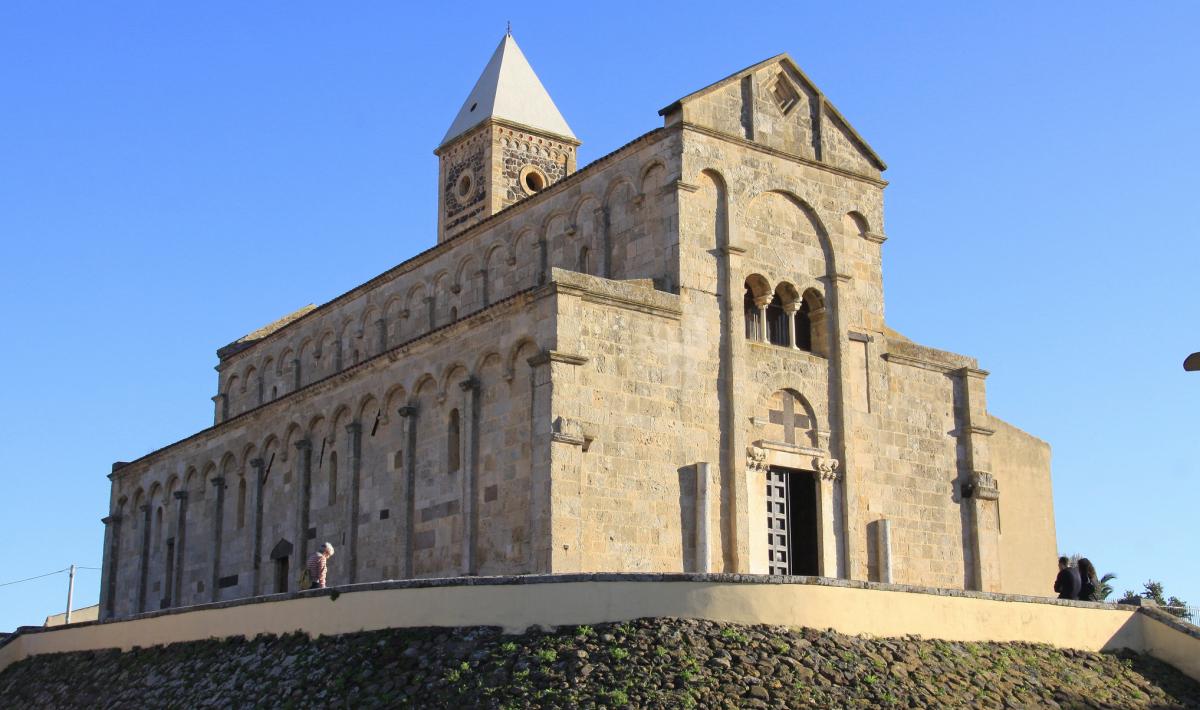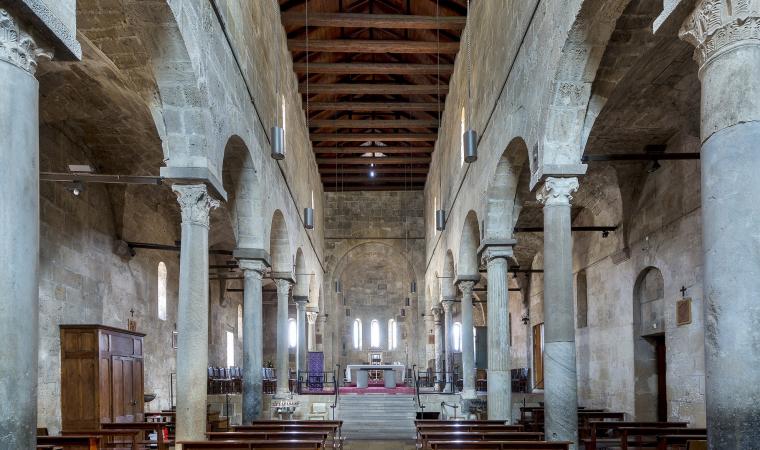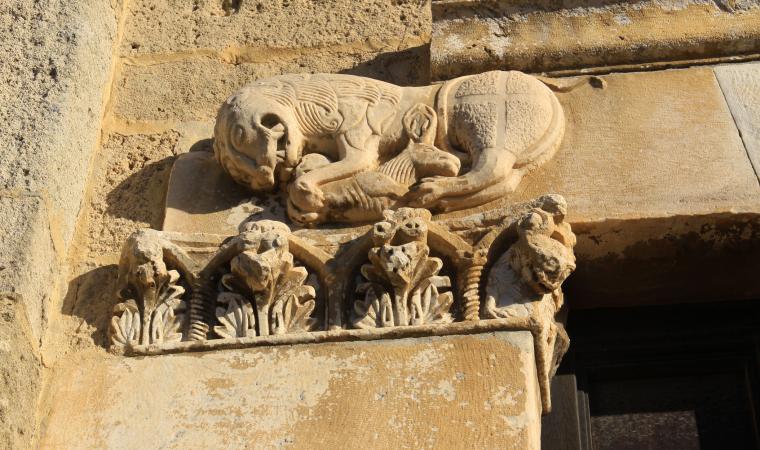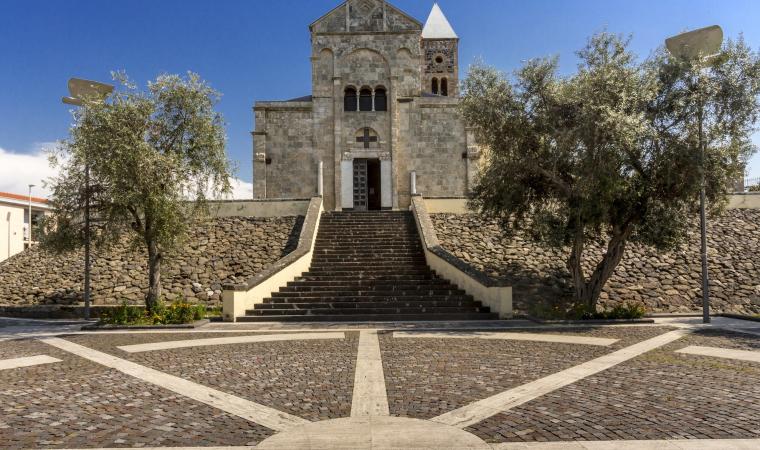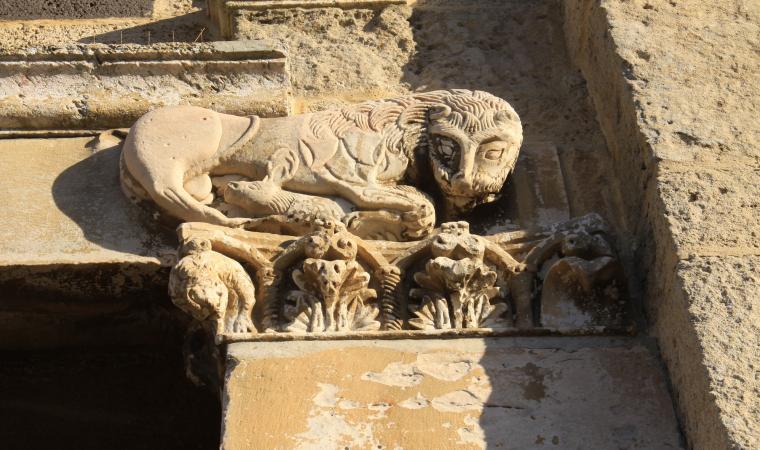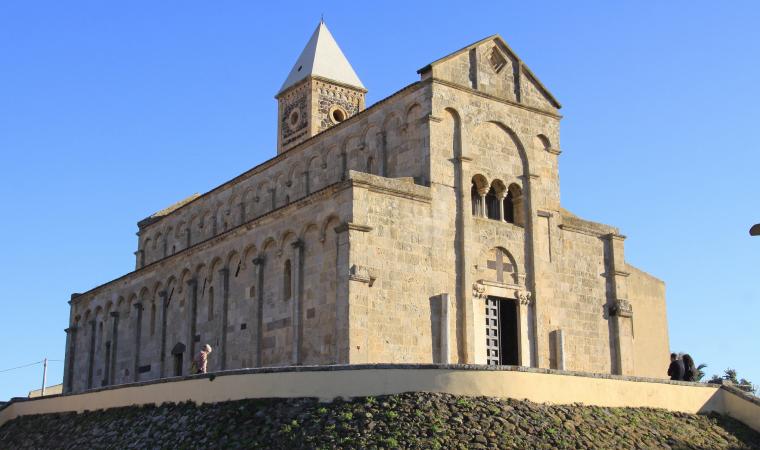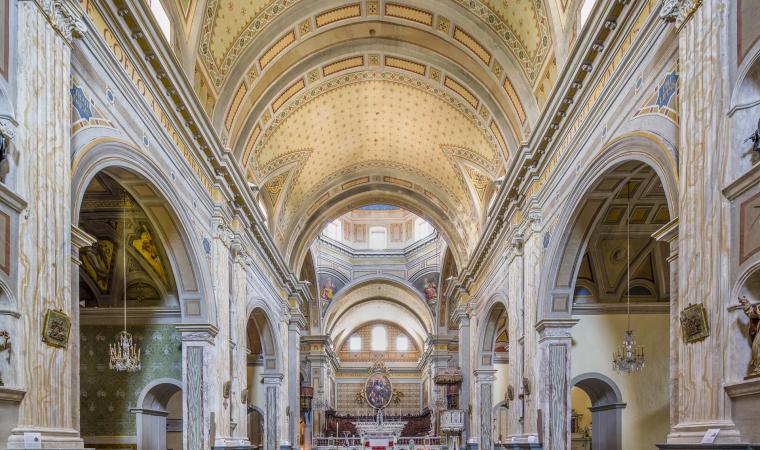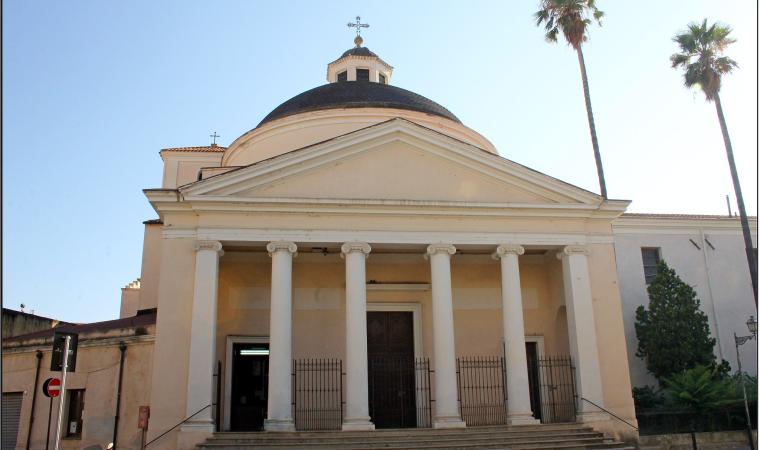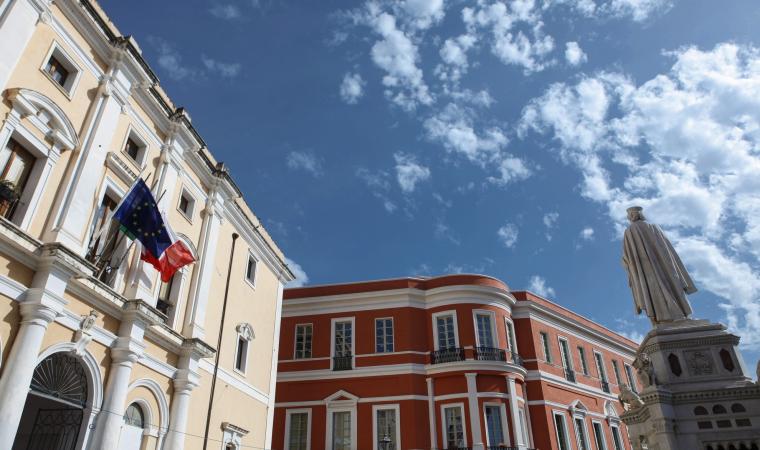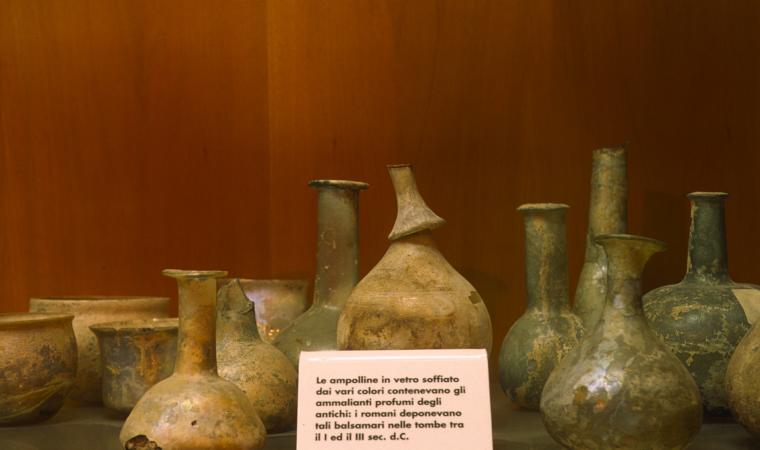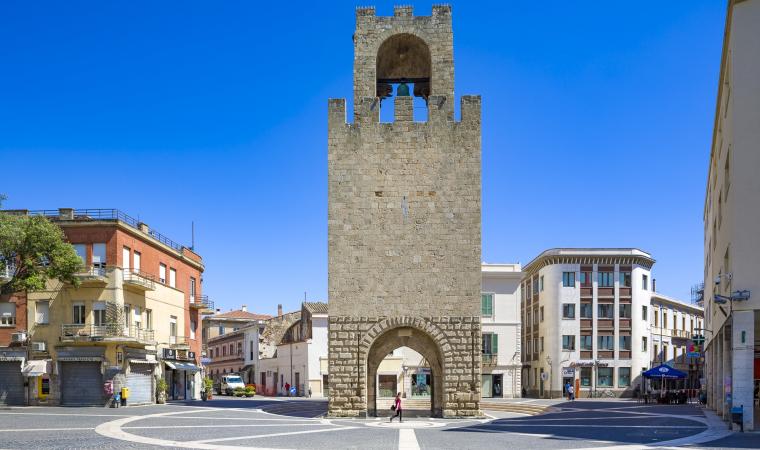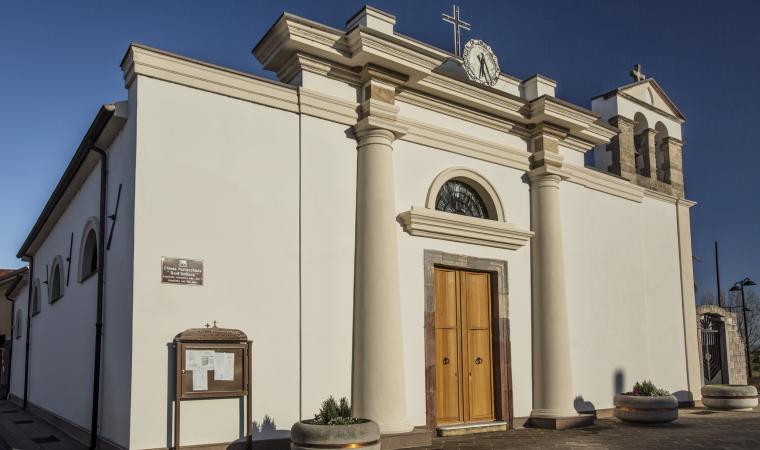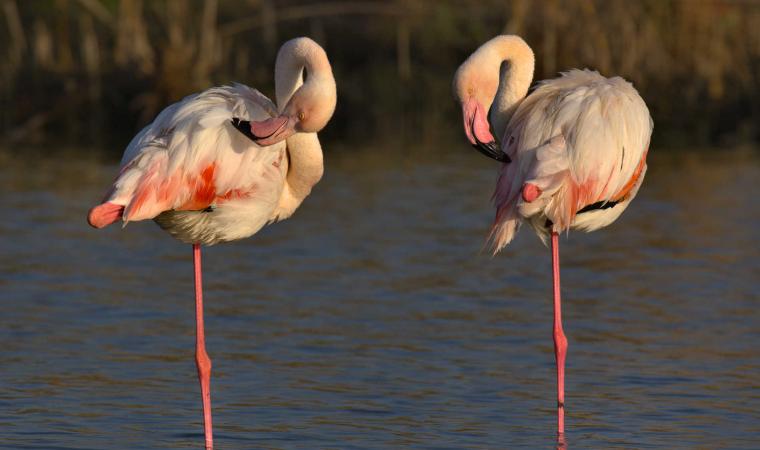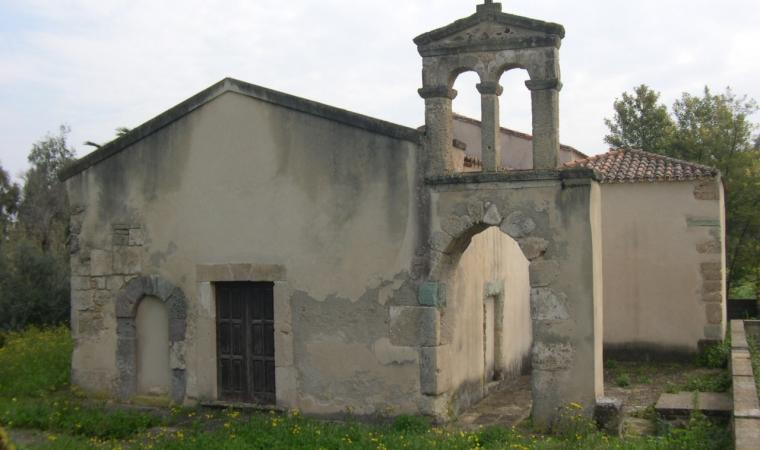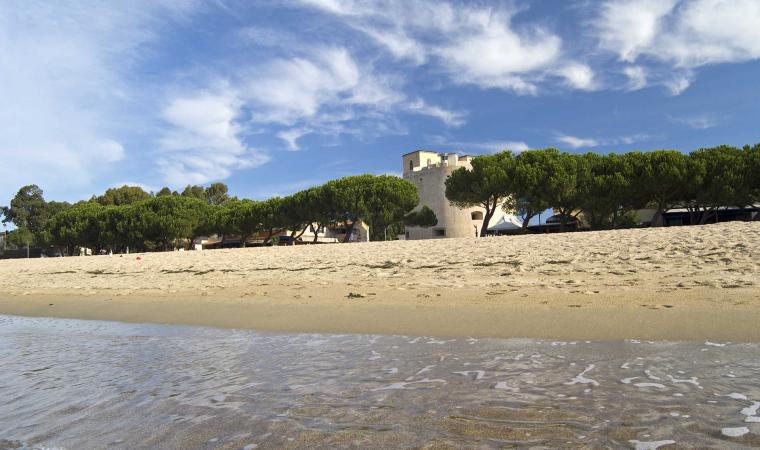It melts your heart at first sight. The church appears in all its majesty rather unexpectedly, on a hillock in the main street of Santa Giusta, at the end of a majestic set of stairs: a gem of Romanesque architecture, model for nearby churches, including San Pietro di Terralba. Although it was the cathedral of the Santa Giusta dioceses, active until 1503, no document attests to its date of construction; it is estimated to have been built between 1135 and 1145. Its shapes, built under the direction of Tuscan masters, are clearly Romanesque-Pisan, very similar to those of the cathedral of Pisa.
The basilica has not been restructured over the centuries and still preserves its original beauty. The harmonious building is 28 metres long and 14 metres wide. It is formed by a hall divided in three naves with seven columns each – central nave with wooden ceiling and minor naves with ribbed ceiling – and by a crypt underneath, unique Sardinian Romanesque and entirely in brickwork, rectangular with four small naves with ribbed ceilings and divided by dwarf marble columns. Inside sit three small alters, one of which contains the relics of the saints that named the basilica: Giusta, Giustina and Enedina.
The strict façade, built, like the entire church, with sandstone from the quarries in the Sinis Peninsula, is divided in three parts by an arch that frames a portal, with a sculpted lion and lioness hunting down a pig and a roe deer, the symbols of the victory of the Gospels over heresy. The uniformity of the external part contrasts the great variety of the columns: these are reused pieces from Roman ages, perhaps from the ancient city of Tharros. The capitals are also of a different order (Corinthian, Ionic and composite), almost all made of marble, some of granite. Their change of style accompanies the passage to the presbyters. The same happens in the crypt: the capitals, however, are made of calcareous stone and sculpted ex novo. The subterranean was perhaps the first sanctuary where divine mysteries were celebrated, an indication that in the 4th and 3rd centuries BC this was once a temple dedicated to Demeter and Persephone. The territory of Santa Giusta, in the province of Oristano, was once the seat of Othoca, a Phoenician-Punic city, then Roman, abandoned in the Middle Ages, then inhabitants concentrated around the cathedral.

